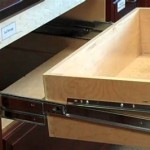Little Black Bugs In My Kitchen Cupboards: A Comprehensive Guide
The presence of little black bugs in kitchen cupboards can be a nuisance and a health hazard. Identifying the species of the bugs and understanding their life cycle, preferred food sources, and potential health risks are essential for effective pest control and prevention.
This article delves into the crucial aspects of little black bugs in kitchen cupboards, providing practical information on identifying, eliminating, and preventing infestations. By addressing these key elements, homeowners can ensure a clean and pest-free kitchen environment.
### Taxonomy and IdentificationLittle black bugs in kitchen cupboards belong to various insect species, including:
- Indian meal moths
- Sawtoothed grain beetles
- Flour beetles
Proper identification is crucial, as different species have distinct characteristics and require tailored control measures.
### Life Cycle and BehaviorUnderstanding the life cycle of little black bugs is essential for effective control. Most species lay eggs in or near food sources. The eggs hatch into larvae, which feed and grow within the food. The larvae eventually pupate and emerge as adults, continuing the cycle.
These bugs are attracted to stored food products, such as grains, flour, pasta, and dried fruit. They can infest pantries, cupboards, and other areas where food is stored.
### Food Sources and HarborageIdentifying the preferred food sources of little black bugs is critical for preventing infestations. These bugs primarily feed on:
- Grains (e.g., rice, wheat, oats)
- Flour
- Pasta
- Dried fruit
- Pet food
Additionally, they may find harborage in cracks and crevices, behind appliances, or in dark, undisturbed areas.
### Health Risks and PreventionSome species of little black bugs can pose health risks by contaminating food with their feces, skin, and eggs. This contamination can cause respiratory problems and allergic reactions in sensitive individuals.
Prevention is key to avoiding infestations. Regular cleaning, proper food storage, and sealing entry points can help keep these pests out of the kitchen.
### ConclusionBy understanding the essential aspects of little black bugs in kitchen cupboards, homeowners can effectively identify, eliminate, and prevent infestations. Proper identification, knowledge of life cycle and behavior, and addressing food sources and harborage are crucial for successful pest control. By implementing these measures, homeowners can maintain a clean and pest-free kitchen environment.

6 Tiny Black Bugs In Kitchen Cupboards

14 Types Of Kitchen Bugs With Pictures Identification Guide

6 Tiny Black Bugs In Kitchen Cupboards

Tiny Black Bugs In The Kitchen Brown Pantry

6 Tiny Black Bugs In Kitchen Cupboards

How To Get Rid Of The Most Common Pantry Pests

Tiny Bugs Black Brown In Kitchen Cabinets Countertops

Tiny Black Bugs In Kitchen 10 Ways To Eliminate Them

6 Tiny Black Bugs In Kitchen Cupboards

Natureplus Tiny Black Beetles Everywhere What Are They
Related Posts








